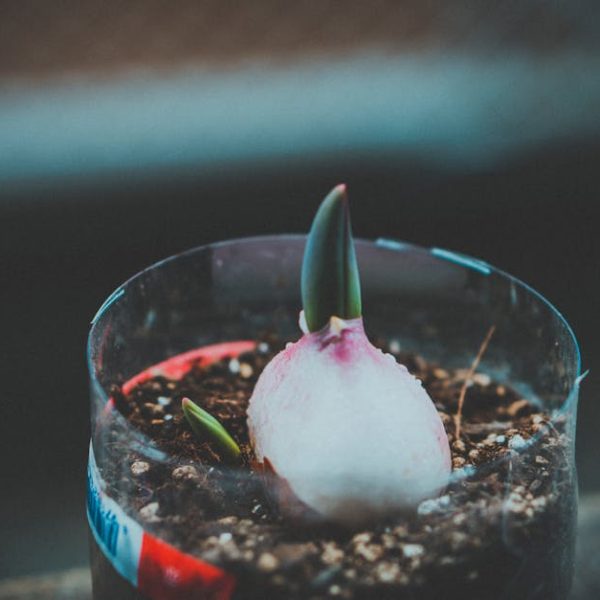Understanding the Benefits of Freezing Beets
When it comes to maintaining freshness and nutritional properties, few methods compare to freezing – especially while talking about beets. Freezing beets preserves their earthy flavor and valuable nutrient content, making them a valuable addition to your meals long after harvest or purchase. It provides multiple advantages compared to other methods of preservation; Listed below are just a few of them:
• Retention of Nutrients: Freezing beets helps to retain their nutritional value and inviting taste, allowing you to enjoy their health benefits regardless of the season.
• Long Shelf Life: Frozen beets can be stored and used for up to 8-12 months without a significant quality loss.
• Freshness: The freezing process maintains the freshness of beets, keeping their taste and texture as good as when they were fresh.
• Versatility: Frozen beets can be efficiently used in various dishes, from salads to stews.
• Reduced Waste: With freezing, the worries about beets going bad before getting a chance to use them reduce significantly.
Pro Tip: Flash freeze your beets before storing them in freezer bags or containers – this makes sure they don’t get stuck and maintain their individuality.
Preparation of Beets for Freezing
Right preparation is a decisive aspect of freezing beets while maintaining maximum freshness. You start by cleaning them thoroughly, peeling off the skin, and cutting them according to your preference. Here is an overview of this process:
Step 1: Cleaning – Use a vegetable brush to scrub dirt off beets, rinse thoroughly.
Step 2: Peeling – Peel the skin off using a quality vegetable peeler.
Step 3: Cutting – Cut the beets into slices, cubes or leave them whole depending on your preference.
Best Practice: Use fresh beets for freezing. Fresh beets are firm, deep in color, and free from cuts or bruises.
Method 1: Freezing Whole Beets
Freezing whole beets is a commonly preferred method due to the convenience it offers. This method involves blanching the whole beets, an important step that helps kill bacteria and enzymes, thereby slowing the loss of vitamins and minerals. Cooling them before freezing ensures that the beets don’t cause the temperature of your freezer to rise temporarily, leading to partially thawing of other items.
- Checklist:
– Blanch whole beets for 30-40 minutes
– Cool quickly in ice water
– Drain and pat dry before bagging and sealing for freezing
Despite the advantages, note that freezing whole beets may occupy more storage space in comparison to diced or sliced beet. Plus, thawing and cooking whole beets could take more time. Consider these factors when choosing between different freezing methods.
Method 2: Freezing Sliced Beets
Freezing sliced beets is another popular method. Cutting the beets into slices of a consistent size before freezing ensures a uniform freezing process and easier portion control. Blanching, just like in the previous method, helps to preserve the key nutrients.
- Steps to freeze:
– Clean, peel and then slice your beets uniformly.
– Blanch the slices for 2-3 minutes.
– Quickly cool them in ice water and drain thoroughly.
– Pack them in freezer bags, remove as much air as possible, and seal tightly.
Pro Tip: Aim for about 1/4 inch thickness while slicing the beets for excellent results.
Method 3: Freezing Beets Puree
Freezing beet puree is a versatile method, especially if you enjoy soups and smoothies. Homemade beet puree stores beautifully in the freezer, and it’s a time-saving resource for different culinary applications.
- Checklist:
– Cook your beets until they are tender.
– Blend the cooked beets to a smooth puree.
– Let the puree cool, then pack in suitable containers and freeze.
Below is a comparison of the benefits and downsides of freezing beet puree.
| Pros | Cons |
|---|---|
| ——————————— | ———————————- |
| Versatile in usage | Extra step of cooking required |
| Takes less storage space | May not suit for salads and roasts |
| Reduces time for future meal prep | Bluish color might occur |
Method 4: Freezing Beets Juice
If you love beet juice for its powerhouse of nutrients, consider freezing it. Beetroots are famous for their health benefits and what could be better than having vitamin-packed beet juice ready in your freezer?
- Steps to freeze:
– Juice your beets.
– Pour the juice into ice cube trays or plastic containers.
– Once frozen, transfer the beet juice cubes into a freezer-safe bag and store.
Pro Tip: Make sure to seal your containers properly to avoid freezer burn and maintain the quality of the juice.
Method 5: Freezing Roasted Beets
Frozen roasted beets add a robust flavor to different dishes. And the roasting process transforms beets into a caramelized, sweet treat that freezes well.
- Checklist:
– Roast beets in your preferred manner.
– Allow cooked beets to cool.
– Pack them in a suitable container and freeze.
While adding a rich flavor profile, freezing roasted beets does call for the additional roasting step. A comparison of pros and cons of this method is presented below.
| Pros | Cons |
|---|---|
| ——————————— | ———————————- |
| Adds a unique flavor | Extra step of roasting required |
| Saves future cooking time | Time-consuming |
| Perfect for quick meals | Beets can become a bit sticky |
Defrosting and Using Frozen Beets
Defrosting and using your frozen beets is a rather simple process, but important to get right. It ensures that you maintain the quality and taste of your stored beets.
- Checklist:
– Thaw your frozen beets in the refrigerator.
– Once defrosted, apply heat if required, based on the flyer of the dish.
Best Practice: Never refreeze thawed beets, as it deteriorates their texture and may cause a loss of nutrients.
Key Takeaway:
- Freezing beets allows a longer shelf life, maintains nutrients, freshness and helps reduce waste.
- Before freezing, choose fresh beets and prepare them by cleaning, peeling and cutting.
- Different freezing methods include freezing whole, sliced, as a puree, roasted or as beet juice.
- Each method comes with its own pros and cons, and it’s important to decide the best based on your needs, storage space and future usage.
- Proper defrosting and usage practices ensures that the quality of frozen beets is maintained.
In the journey of maintaining a healthy lifestyle, it can be assuring to have fresh, nutritious food readily available at any time. It’s comforting to know that freezing does not significantly reduce the valuable nutritional content of beets, making it a simple yet efficient method to keep beets fresh. Choose the method that best suits your needs and ensure that you have a stash of this nutrient-packed root vegetable ready whenever you need it.
FAQs
Q: What is the shelf-life of frozen beets?
A: If properly stored, frozen beets can last up to 8-12 months in the freezer without a significant loss in quality.
Q: Does freezing alter the taste or texture of beets?
A: Freezing beets effectively maintains their fresh flavor and nutrient content. However, the texture might become slightly softer compared to fresh beets, but that rarely impacts their culinary applications.
Q: Can I freeze raw beets without blanching?
A: While you can freeze raw beets, blanching before freezing is recommended as it helps in retaining the color, texture and most importantly, the nutritional properties of the beets.
Q: How should I defrost frozen beets?
A: The best method to defrost frozen beets is by transferring them from the freezer to the refrigerator and allow them to thaw naturally.
Q: Can I refreeze defrosted beets?
A: It is not recommended to refreeze thawed beets as it deteriorates their texture and can cause a loss of nutrients.
Feel free to share this article on your social media profiles and encourage your friends to learn more about the health benefits of beets. For more tips and insights on food preservation, explore our other articles.






